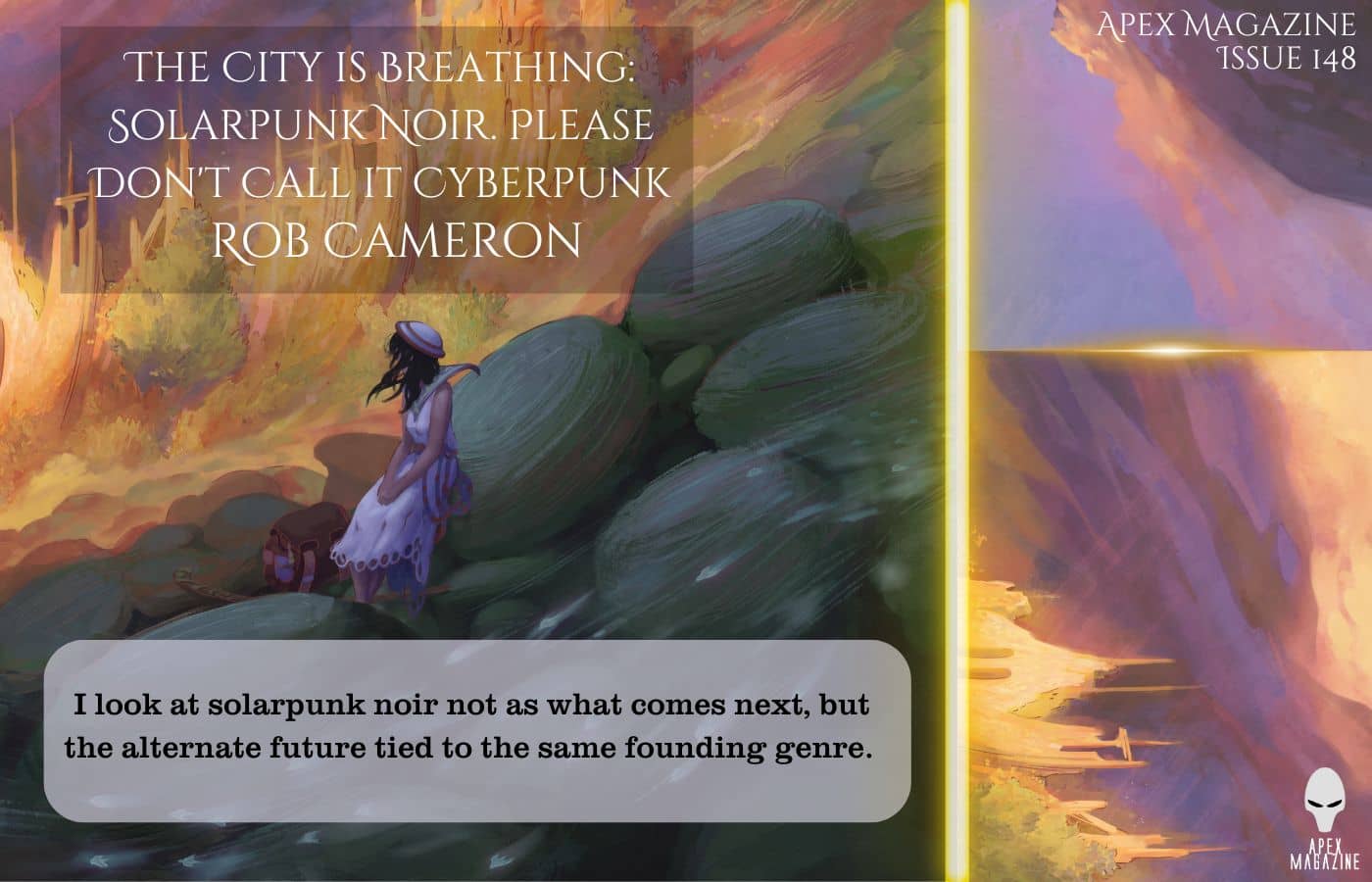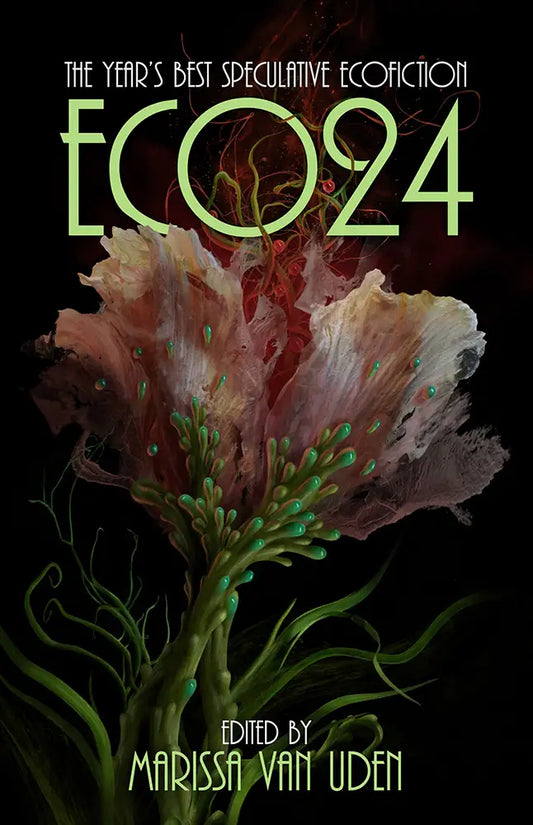
“The Dark City As A Hot Place to Be: A Call for Solarpunk Noir” is the title of the essay I wrote for Solarpunk Magazine’s Lunarpunk Special Issue. I detailed core tenants of this sexy, new subgenre I want to see in the world. Besides adhering to most of the solarpunk conventions, solarpunk noir would:
Reimagine urban life: It moves beyond modernist and postmodernist conservative symbolism and psychology that has dominated our narratives of cities.
Be near future: It makes a minimal break with the usable past and the moment we find ourselves in.
Engage with capitalism: Since we are discussing the present or near future, the dominant economic ideology and how one deals with it or the mechanics of getting beyond it are taken into account.
Get into the weeds of public policy: Stories that delve into the complexities of governance, and how it can be worked for or against us.
Focus on political violence: All violence would stem from people trying to maintain an unsustainable status quo vs those trying to change man-made ecological systems for the better.
Fight for power: A lesson learned from Octavia Butler. These stories are about people taking power and power’s consequences.
Have at its core, systemic hope: The main character may lose, but we do not. We make good decisions and deal with the consequences.
A forum commentator asked why I had not mentioned cyberpunk at all in the essay. That was a feature, not a bug. Let me explain.
Solarpunk noir is not a direct critique of cyberpunk, so writing at length in opposition is counterproductive. There was a need and cyberpunk filled it. Gibson’s Neuromancer is an aesthetic, cross-cultural, intergenerational nuclear bomb. It’s impossible to consume or create media without feeling its influence down to your cells. But I look at solarpunk noir not as what comes next, but the alternate future tied to the same founding genre. If a time traveling asshole were to erase the advent of cyberpunk, you could still get to solarpunk noir. But if they erased film and pulp noir, we get nothing.
In a solarpunk noir timeline, there would be things that, at first glance, one might mistake as cyberpunk because they were planted in the same noir soil. Anxiety over technological change. The oppressive over the oppressed. Capitalist tragedy. The centrifuge of urbanization. Atmospheric cityscapes. Violence. But those are surface details. What sets solarpunk noir apart from cyberpunk is systemic hope.
Underlying the solarpunk noir timeline is the seed of change. The mission is revising and overwriting the stories—and by stories, I mean misconceptions and outright lies — about human nature, the other, and cities that became an ugly self-fulfilling prophecy of anxiety and powerlessness. Coiled within solarpunk noir’s seed coat, ready to break through, is Coltrain’s “Compassion,” which itself is simply three words exponentially reborn in jazz: We Shall Overcome.
This is not hope for hope’s sake. Similar to how cacti and succulents have learned to breathe at night to survive the desert, Black American narratives evolved to withstand the boom-and-bust cycle of calamity; existing simultaneously in various dimensions of dystopia. It’s this kind of resilience that solarpunk noir would articulate, regardless of a character’s ethnic background or community.
At this point in our media diet, if Marvel is any barometer of the zeitgeist, the concept of multiple timelines, realities that cross the streams with our own, is relevant here. And if you think of a future as the net result of a chain of choices, then the stories we choose to tell are crucial links. Solarpunk noir is a way of seeing these entangled timelines and nurturing the ones that we want to live in, those that do not deny autonomy, or hope, and speaks back through the past to heal cyberpunk producing nihilism. There would be some other differences, however, that I should emphasize.
While it is possible for solarpunk science fiction to be set in the far future, a solarpunk noir story would not because we want to stay as close as possible to actionable solutions. Too far into the future and we are dealing with societal and technological projections that border on fantasy. It also runs the risk of moving us closer to cyberpunk, which paradoxically, is a step backwards. The original Blade Runner was set in 2019. Solarpunk noir stories would deal primarily with existing scalable technologies. That includes cultural technologies: government, art, democracy, and all relevant isms.
Another difference between cyberpunk and solarpunk noir would be the move away from the extremes of transhumanism. The metaphysical and medically unsustainable tropes of consciousness transference is a billionaire pipedream of life without limits, and it is septic to real futures. Solarpunk noir deals with the material reality of the world we must share. To do otherwise is a first world privilege of concentrated power built quite literally upon the bones, lungs, and dignity of people who are not nearly as protected. We end up treating the body as biomass and product with capital value divested from the worth of a real human being. Cyberpunk has covered this ground with gusto, and I categorically do not want.
There is a process in nature that allows for plants to grow in the dark. At first, they may even grow taller and faster. But ultimately, they cannot survive without sunlight. They need something to grow towards in order to flourish. That is a good way to think of the difference between cyberpunk and solarpunk noir. The latter has a light source, and it is us.











